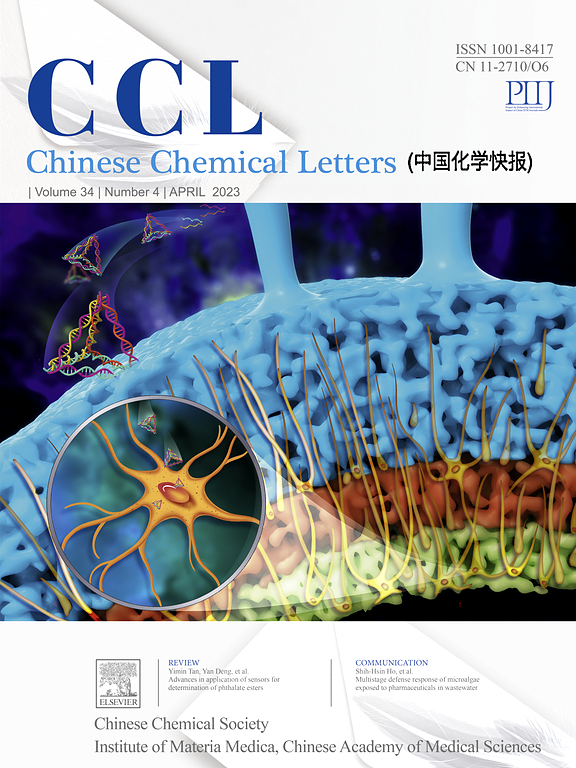Steric effects and electronic manipulation of multiple donors on S0/S1 transition of Dn-A emitters
IF 9.4
1区 化学
Q1 CHEMISTRY, MULTIDISCIPLINARY
引用次数: 0
Abstract
Multiple donor-acceptor (D-A) combinations represent a promising category of thermally activated delayed fluorescence (TADF) materials, offering potential for superior efficiency and stability. However, current systems are predominantly composed of limited donor groups, primarily carbazole-based derivatives. In this work, we developed a series of D-A type materials incorporating helical π-expanded carbazole (CzNaph) and 7H-dinaphtho[1,8-bc:1′,8′-ef]azepine (AzNaph), alongside traditional carbazole, ranging from mono- to tetra-substituted configurations (Dn-A). Through systematic investigation of geometric and electronic structures, the number and positioning of multiple donors are confirmed with significant manipulations on charge transfer characteristics and the S1 state via steric effects. Density functional theory (DFT) calculations reveal that varying the number of π-extended donors within the acceptor framework produces emission colors from ultraviolet to red, providing a diverse range of emitters. Furthermore, the reduced reorganization energy of S1 observed in tetra-substituted Cz and CzNaph, as well as MonoAzN, indicates lower structural relaxation, highlighting these materials' potential as stable luminescent candidates. This study underscores the importance of diverse composing units in achieving efficient and stable TADF emitters with multiple and hetero-donor configurations.

求助全文
约1分钟内获得全文
求助全文
来源期刊

Chinese Chemical Letters
化学-化学综合
CiteScore
14.10
自引率
15.40%
发文量
8969
审稿时长
1.6 months
期刊介绍:
Chinese Chemical Letters (CCL) (ISSN 1001-8417) was founded in July 1990. The journal publishes preliminary accounts in the whole field of chemistry, including inorganic chemistry, organic chemistry, analytical chemistry, physical chemistry, polymer chemistry, applied chemistry, etc.Chinese Chemical Letters does not accept articles previously published or scheduled to be published. To verify originality, your article may be checked by the originality detection service CrossCheck.
 求助内容:
求助内容: 应助结果提醒方式:
应助结果提醒方式:


